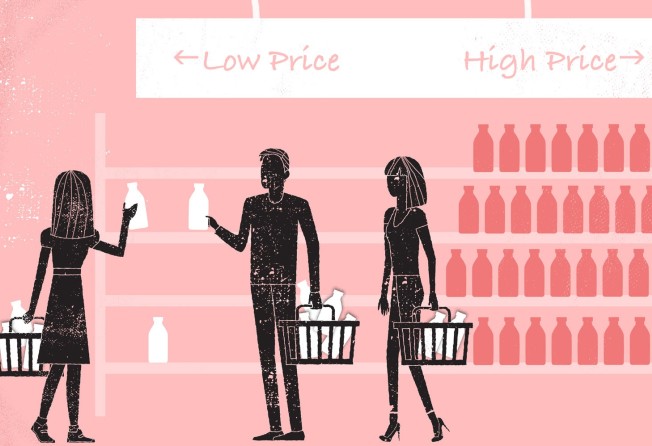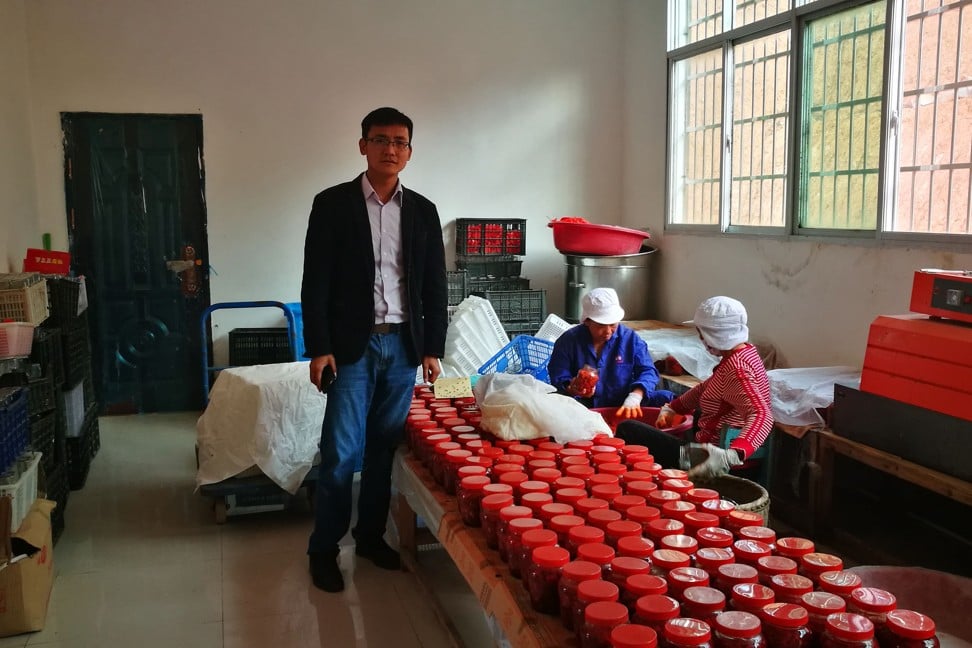
China’s consumption downgrade tastes good for fermented tofu makers
- Under pressure, consumers in China are cutting back on spending on high-end items, while sales of instant noodles are rebounding after two years of decline
- Weakening consumer spending comes as economic growth decelerated to its lowest level in nearly three decades at the end of the third quarter

Three years ago, when Luo Zhaoliu walked away from the engineering job he had held for nine years in the prosperous metropolis of Shenzhen to return home to one of the poorest corners of China to start a fermented tofu workshop, his friends quite rightly questioned his decision.
Sentiment was running high in mainland cities just like Shenzhen, known as China’s Silicon Valley, with many middle-class households pouring money into property and start-up firms. Consumption confidence was relatively strong, with a seemingly insatiable demand for items that indicated an upgrading of expenditure, from imported avocados to yoga pants.
The fermented tofu with a local tea oil fragrance Luo planned to produce, on the contrary, was a traditional delicacy for the poor to add flavour to plain rice or instant noodles when they did not want to spend money on additional dishes. With a retail price of about 15 yuan (US$2.10) per jar, it is among the cheapest choices for adding oil and salt to a meal.
It requires far less sophisticated technology than Luo’s previous job of making electric vehicle components, and few believed that the idea was financially sensible. At the same time as Luo returned to Baoshan village in Jiangxi province, China’s total consumption of instant noodles, seen as a barometer of low-end consumption, dropped 17 per cent to 38.5 billion cases.

Luo, however, went ahead with his plan to revive a family recipe, and he now employs 20 pink-clad local female workers to produce and package the tofu, which is sold online.
According to Luo, business has been growing steadily over the past three years thanks to the quality of his product in a highly competitive market, as well as the general trend of consumption downgrading, namely consumers preferring affordable items over spending on luxurious products.
Some analysts argue that the concept of a consumption downgrade is misleading, given that Beijing’s official figures still show growing consumer spending. Retail sales in China rose 8.2 per cent to 30 trillion yuan (US$4.3 billion) in the first nine months of 2019, according to China’s National Bureau of Statistics, and President Xi Jinping is trying to convince foreign investors to put faith in China’s consumer spending power.
Unlike mature markets such as Japan, most of China’s population of 1.4 billion has a relatively modest income level – its per capita gross domestic product is only set to reach US$10,000 this year, with Japan just under US$40,000 at the end of 2018, according to the World Bank. Still, given its huge size, it is a promising market for any company.
At the same time, though, there are signs of weakening consumer spending in the world’s second largest economy, with growth at the end of the third quarter having decelerated to its lowest level in nearly three decades.
“The main driving force of China’s consumer spending comes from the country’s middle class, but with the slowdown of China’s economy, their income growth and the value of real estate assets, actually, has been stagnant and has even slid. As a result, it will be a trend that ordinary consumers in China will continue to shrink their consumer demand in at least the coming couple of years,” said Simon Zhao, a professor at the United International College in Zhuhai, a joint school created by Beijing Normal University and Hong Kong Baptist University.
Sales of sedans, sport utility vehicles and minivans dropped 6.6 per cent in September, the 15th month in the last 16 that has witnessed a fall, according to the China Passenger Car Association. A survey conducted by Conference Board China Centre last month found that around 40 per cent of Chinese respondents had cut spending on entertainment in the second quarter to save money.
Sales of instant noodles in China, meanwhile, rebounded to over 40 billion cases in 2018 after a drop in 2016 and 2017, data from the World Instant Noodles Association showed, suggesting to some analysts that consumers were purchasing cheaper products and foregoing more expensive food items, particularly with pork prices soaring due to the crisis caused by African swine fever.
The reason for the increase of my fermented bean curd sales is similar to the rising demand for inexpensive instant foods
Luo sold around 60,000 jars of fermented bean curd in 2017, with the figure tripling to 200,000 this year. An equity investor put money into Luo’s start-up in September, valuing his brand at 5 million yuan (US$710,000) – a handsome appreciation from his initial investment of 900,000 yuan (US$128,000) three years earlier.
The 36-year-old has already achieved sales levels that are hard to believe for both his parents and grandparents, who also made a living by making and selling the product. Luo expects sales to grow further as consumers scale back their spending.
“The reason for the increase of my fermented bean curd sales is similar to the rising demand for inexpensive instant foods,” Luo said. “Market demand is much larger than what I sell, but the production capacity of the factory has reached its limit and the stock is in short supply.”
However, thanks to the capital inflow from the equity investor, Luo is expanding his capacity fourfold to be able to produce 800,000 jars next year.
“The economy is not good,” he said. “You see that the price of pork is soaring, becoming so expensive. Who is still willing to eat meat daily?”

Chinese official data showed pork prices increased by 69 per cent in September from a year earlier, with prices expected to rise further in the months ahead. Overall, China’s pork crisis had sent prices spiralling to their highest reading since November 2013 as consumer inflation reached 3.0 per cent in September, according to official government data. The 3.0 per cent mark is the upper limit of Beijing’s consumer price index (CPI) target for 2019.
“Many families are going to reduce their consumption of meat. So those inexpensive supplemental foodstuffs like ours, which helps give texture and flavour, are needed for both migrant and white-collar workers,” Luo said.
Meanwhile, China’s robust demand for services such as health care and education is highlighted by a brand new kindergarten that has opened about an hour’s drive from Luo’s workshop.
We are starting to worry that if our current income can cover all ends – the price of pork was a few yuan [per 500g] last year, now it’s more than 30 yuan
Zou Minmin and her husband, a couple in their late 40s, noticed increased demand for an urban lifestyle that resembles that in China’s top cities and invested 5 million yuan (US$710,000) to open a high-end kindergarten in the town centre of Wan’an, which is officially one the poorest places in China.
The kindergarten proved extremely popular with its up-to-date facilities. Every class has 25 children and the classrooms are equipped with a piano, camera monitoring and central air conditioning. Each child is given an iPad for science, while work from artists including Vincent van Gogh are featured in the art classes.
And despite charging 9,600 yuan (US$1,364) a year, young couples lined up to enrol their children.
“This kindergarten is just as good as those in first-tier cities. It’s affordable for us for now,” said a young mother waiting to pick up her child, and whose husband works in Guangdong as a migrant worker.

The per capita disposable income in Wan’an was 32,509 yuan (US$4,619) in 2018, around half the level of Shenzhen, driving many local young people to leave the town to work as migrants in big cities.
The migrant workers, in turn, send money back to Wan’an to buy property when they are unable to afford houses in places like Guangzhou or Shenzhen. In Wan’an, it costs around 200,000 yuan (US$28,416) for a down payment for a two-room flat with a mortgage of around 3,000 (US$426) yuan per month.
The tuition fees at the kindergarten in Wan’an, though, are increasing along with food inflation.
“We are starting to worry that if our current income can cover all ends – the price of pork was a few yuan [per 500g] last year, now it’s more than 30 yuan,” added the young mother.